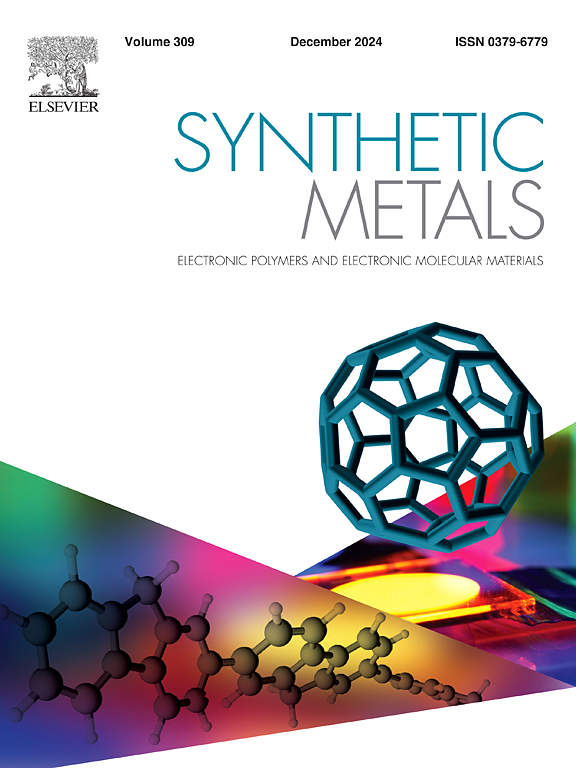π-conjugated polyimines in electrochromic devices with rapid response and good optical stability
IF 4.6
3区 材料科学
Q2 MATERIALS SCIENCE, MULTIDISCIPLINARY
引用次数: 0
Abstract
Three π-conjugated donor/acceptor polyimines have been synthesized for electrochromic applications. Intramolecular hydrogen bonds between the carbamate hydrogen and the imine nitrogen on the side chains gave semi-locked planar monomer M1 and M2. Additional C-H∙∙∙N hydrogen bonds between the nitrogen on the pyrazine and the hydrogen of the azomethane resulted in a fully locked planar monomer M3. These monomers copolymerized with bis(trimethylstannyl)-2,3-dihydrothieno[3,4-b][1,4]dioxine (EDOT-Sn). Different imine acceptors can significantly affect the structures of polymers and thus their optoelectronic properties. Among them, P2 demonstrated the best electrochromic performances at a wavelength of 830 nm, including an optical contrast of 28.06 %, an ultrafast response time of 0.15 s, and a high optical stability with a reversibility of 88.54 % after 200 cycles, while the coloring efficiency was the highest at a wavelength of 592 nm (328.43 cm2 C−1). The results indicate that hydrogen-bonded π-conjugated polyimines can be promising materials for electrochromic applications.
π共轭聚酰亚胺在电致变色器件中具有快速响应和良好的光学稳定性
合成了三种π共轭给受体聚亚胺,用于电致变色。氨基甲酸氢与侧链上的亚胺氮之间的分子内氢键形成半锁定的平面单体M1和M2。吡嗪上的氮和偶氮甲烷上的氢之间额外的C-H∙∙N氢键形成一个完全锁定的平面单体M3。这些单体与二(三甲基锡基)-2,3-二氢噻吩[3,4-b][1,4]二恶辛(EDOT-Sn)共聚。不同的亚胺受体可以显著影响聚合物的结构,从而影响它们的光电性能。其中,P2在波长830 nm处表现出最佳的电致变色性能,光学对比度为28.06 %,超快响应时间为0.15 s, 200次循环后的光学稳定性为88.54 %,而在波长592 nm处着色效率最高(328.43 cm2 C−1)。结果表明,氢键π共轭聚酰亚胺是一种很有前途的电致变色材料。
本文章由计算机程序翻译,如有差异,请以英文原文为准。
求助全文
约1分钟内获得全文
求助全文
来源期刊

Synthetic Metals
工程技术-材料科学:综合
CiteScore
8.30
自引率
4.50%
发文量
189
审稿时长
33 days
期刊介绍:
This journal is an international medium for the rapid publication of original research papers, short communications and subject reviews dealing with research on and applications of electronic polymers and electronic molecular materials including novel carbon architectures. These functional materials have the properties of metals, semiconductors or magnets and are distinguishable from elemental and alloy/binary metals, semiconductors and magnets.
 求助内容:
求助内容: 应助结果提醒方式:
应助结果提醒方式:


